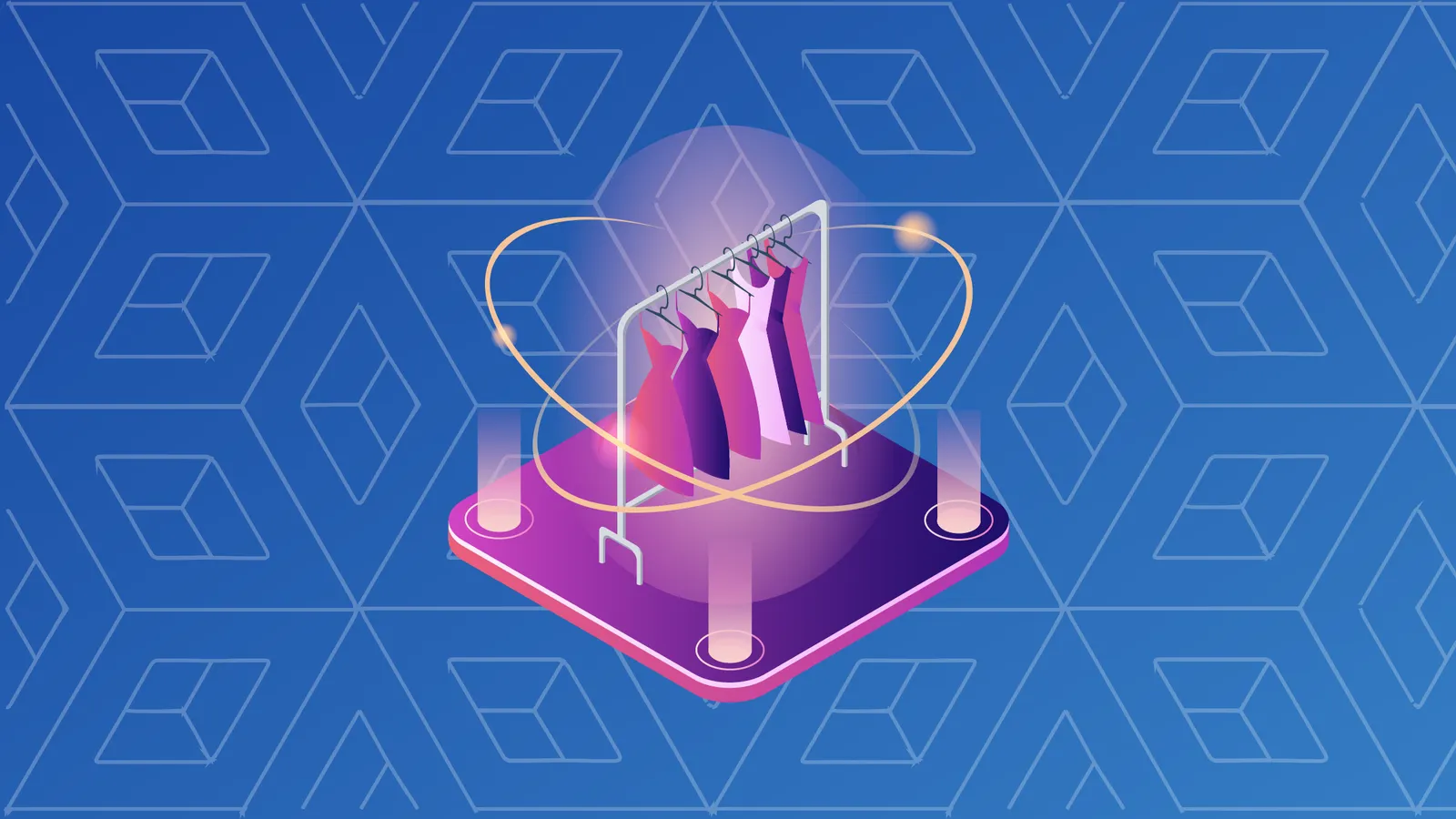To an outsider, it may seem odd to think that fashion and technology could be deeply linked. After all, when most of us think of fashion we think of high-end clothing worn by models on runways—or of the clothes that we wear on a day-to-day basis. Yet, techno-fashion is both a rapidly-developing industry and one with roots extending back for centuries. Now, the advent of artificial intelligence (AI) systems capable of dramatically reinventing the industry has made the relationship between fashion and technology all the more relevant. To better understand where AI and other tech may take fashion in the years to come, it’s helpful to begin with a primer on the ways these two seemingly-disparate areas have interacted in the past.
The Industrial Revolution and Fashion
While it can be argued that the design and manufacturing of clothing has always been dependent on technology of some type—even the invention of the needle was dependent on technology, after all—many view the most fruitful interactions between tech and design as having begun around the time of the Industrial Revolution in the late 18th century. At this time, rapid improvement in the types of machines available to workers across many fields led to a quick uptick in the capacity for those workers to create a host of products. Production of many things—including clothing—suddenly became much easier, faster, and cheaper. It also became more industrialized.
By the late 19th century, new tools available as a result of the Industrial Revolution had transformed or would soon upend nearly all parts of the fashion world. For one, production shifted from individual workers crafting clothing to large factories capable of mass producing items. New agricultural machines and chemical products helped to increase production of raw materials used by the fashion industry. Among the most significant inventions in this period for fashion was the sewing machine, invented in the 1830s in France and also patented in 1851 by Isaac Singer. The Spinning Jenny, a new type of spindle, and the Jacquard machine, a new type of loom, were also critical to the advancing of textiles technology.
Synthetic dyes emerged beginning in the middle of the 19th century as well. Prior to this time, dyeing fabric was time-consuming and expensive. It was also limited depending on the particular resources available in a given area. Synthetic dyes suddenly opened up the color palette available to clothing makers to an incredible degree.
To be sure, while there were many benefits associated with the Industrial Revolution, there were also trade-offs. Independent artisans who had worked to create clothing before this period found themselves unable to compete with the scale and speed of factories. And factories, new machinery used for production, and increasing competition among companies often led to unsafe and unfair labor conditions. The concept of a “sweatshop” can refer to poor working conditions in any industry, but it has particular connotations for the clothing and fashion worlds that linger to this day. Tragic events like the Triangle Shirtwaist Factory fire of 1911 reflect the dark side of the Industrial Revolution as it related to fashion.
Pushing Back Against Technology
Mass production reduced costs and sped up the process of making clothes, but it also removed some of the personal element of hand-made products. Charles Worth, a British designer living in the 19th century, was among the first and most prominent to move away from the trends made possible by the Industrial Revolution. He helped to cultivate an appreciation for one-of-a-kind pieces of clothing still made by hand. Worth’s work included the use of mannequins, his signature on each item of clothing, and a move toward season-by-season releases of new lines of clothing, all of which remain in some form or another in haute couture today.
20th Century Developments
The Art Deco movement in the early 20th century helped to inspire both significant changes to the ways that urban areas were structured and designed and new fashion trends as well, among other things. One aesthetic in the world of fashion aimed to respond to and in some cases represent these new visuals, using new designs and art as inspiration.
Early in the 20th century, technological developments also expanded the range of products and materials available to fashion designers. Rubber and plastic were among the biggest innovations of the period. Designers and clothing manufacturers quickly incorporated them into shoes, accessories, and clothes of all types.
The 1920s and 1930s saw a boom of more new materials, most notably as a result of the invention of polyester, nylon, and other synthetic polymer fabrics during this time. Technology not only made it easier to construct clothes, but it also made it possible to use more materials to do so.
Later in the 20th century, fashion continued to seek inspiration from technological developments in the wider world. The space race in the middle part of the century helped to define a popular aesthetic for many years, for example.
Computers and the Internet
By the last decades of the century, technology continued to expand the ways that fashion professionals and even amateurs could approach the industry. Personal computers and the internet completely transformed fashion, both in terms of aesthetic choices made by designers and, more importantly, by opening up access to a much wider portion of the population.
Computer programs like Computer Aided Design (CAD) suddenly made it possible to visualize designs in a new and compelling way. Designers could now brainstorm, tweak, and even polish their designs entirely through software systems, perfecting their creations before ever making use of fabric at all, if they wished. In more recent years, this trend has only amplified: 3D printers now make it possible to craft elements of fashion with a precision never before seen, for instance.
The proliferation of the internet led to massive changes in the ways that both producers and consumers viewed and thought about fashion. Chat groups, blogs, social media, and other ways of connecting helped to broaden the spread of ideas and allowed designers to share ideas, best practices, and inspiration with a wider audience than ever before. The online presence of brands, designers, and other artists has provided interested consumers with more information and a greater degree of choice in their personal fashion than was ever possible.
In the most recent years, the interactions between fashion and technology have continued to evolve at an incredible pace. Even prior to the recent popularity of new AI systems, designers and tech companies alike have eagerly explored the ways that technology can be integrated into clothing and accessories themselves. The invention of so-called “wearable tech” now means that clothing can be used to connect to the internet, to monitor vital signs and other bodily information, to answer the phone, to manage the tech in your home, and much more.
In 2023, the intertwining of tech and fashion is more robust than ever before. Generative AI is used to create new pieces and to collaborate with human artists to make works previously impossible to develop. Blockchain tech and, in particular, NFTs have played an increasingly important role in the fashion space, with numerous brands exploring the world of tokens. And the metaverse offers the opportunity for fashion to explore a new digital future that can potentially be completely removed from the normal physical realm of clothing.
Cheat Sheet
- The fashion industry has capitalized on technological innovations since at least the time of the Industrial Revolution.
- Technological advances have helped fashion designers and companies to increase production volumes while reducing time and cost, to make use of new materials, to market and sell items in new ways, and even to integrate technology into clothing and accessories directly.
- Some of the earliest machines that helped to move the fashion world forward include the sewing machine and the Spinning Jenny.
- The launch of factories and machines made mass production possible and also helped to cultivate an aesthetic continuing to prioritize handmade, artisanal products. The latter developed into the haute couture style of today.
- Early in the 20th century, advancements in materials like rubber and the creation of new polymers like polyester and nylon made new fashion products possible.
- The rise of computers later in the century revolutionized the way that designers worked and the way that stores sold items to consumers.
- Most recently, the wearable tech trend has brought technology into articles of clothing and accessories.
- Looking ahead, AI is expected to continue to revolutionize the fashion industry in a multitude of ways.


